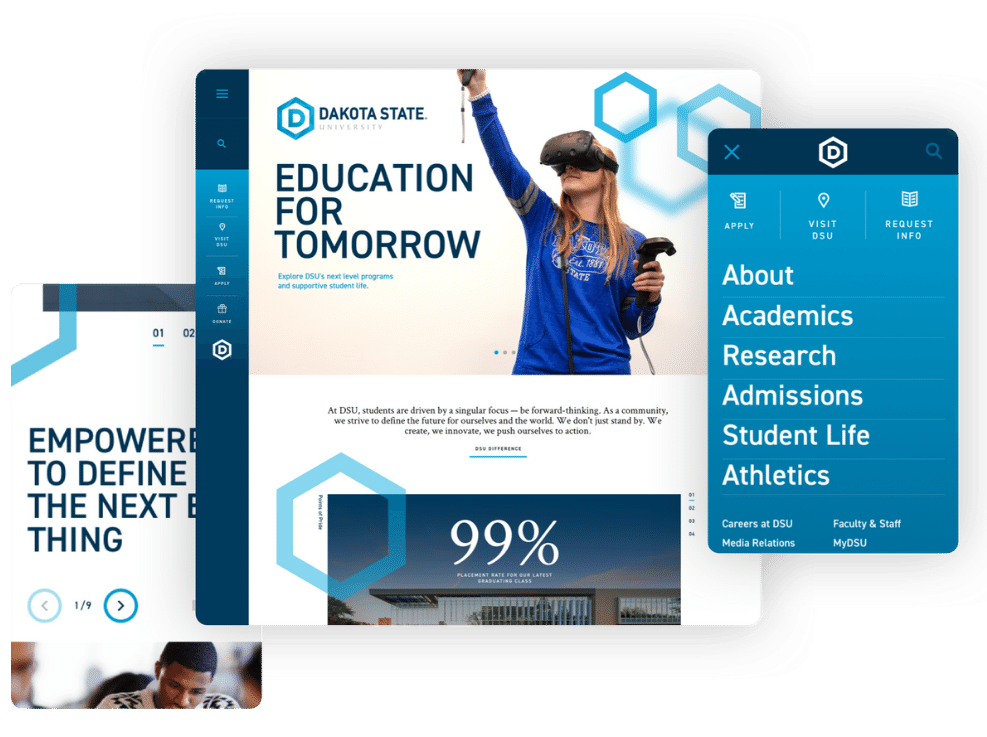Change Your Service with Personalized Website Design Services
Maximize Customer Experience With Innovative Website Layout Solutions
In today's electronic landscape, maximizing user experience via ingenious internet site design services is important for businesses looking for to involve their target market properly. The combination of interactive components can even more boost the user trip, motivating a reevaluation of conventional style methods.
Comprehending User-Centric Style

To apply user-centric design effectively, it is necessary to perform detailed research, consisting of customer interviews, studies, and functionality testing. These research study methods give valuable data that notifies style decisions, making certain that the final item aligns with customer expectations. Additionally, producing user personalities can assist designers picture and understand with the end-users, assisting the layout procedure toward more pertinent options.
In addition, repetitive style is a vital part of user-centric methods. By continually screening and refining styles based upon user feedback, developers can determine discomfort factors and locations of enhancement, leading to a more refined final product. Ultimately, user-centric style is not just a stage in the development procedure yet a continuous dedication to focusing on customer requirements, causing more appealing and reliable electronic experiences.
Value of Responsive Layouts
As electronic interactions progressively happen across a selection of gadgets, the relevance of receptive formats can not be overstated. A responsive design guarantees that a web site adapts flawlessly to different screen sizes, from desktop computer displays to smartphones. This versatility is crucial in today's multi-device landscape, where customers anticipate a constant and interesting experience no matter of exactly how they access material.
The key benefit of receptive design is improved individual fulfillment. When an internet site is enhanced for all gadgets, it reduces the demand for zooming, scrolling, or straight navigation, which can lead and discourage individuals to greater bounce prices. In addition, online search engine like Google focus on mobile-friendly websites in their ranking algorithms, making receptive layouts necessary for efficient search engine optimization approaches.
Moreover, receptive formats help with simpler maintenance and updates. Rather than handling different versions of an internet site for different devices, a solitary, fluid design can be customized, conserving time and sources. This alternative approach not just improves performance however additionally promotes brand comprehensibility across platforms. Ultimately, purchasing responsive designs is not simply a fad; it is a basic concept of modern website design that significantly boosts individual experience and engagement.
Enhancing Navigation and Access
Reliable navigating and availability are pivotal parts of a well-designed site, dramatically affecting individual involvement and fulfillment. A straightforward navigation structure enables visitors to discover details promptly and intuitively, lowering stress and raising the probability of repeat visits. Carrying out clear, descriptive labels for navigation web links, in addition to a logical pecking order, can guide users flawlessly through the web site.
Ease of access is just as essential, making certain that all users, regardless of their specials needs or capabilities, can communicate with the site effectively. This can be achieved through making use of proper shade contrasts, message sizes, and alt message for pictures, which with each other improve the experience for aesthetically impaired users. Furthermore, incorporating keyboard navigating and screen reader compatibility broadens accessibility for individuals with diverse requirements.
Regular usability testing can offer useful understandings right into navigation performance and access issues. By gathering comments from genuine users, designers can identify pain points and make helpful resources informed modifications. Eventually, prioritizing navigation and ease of access not only fosters inclusivity however likewise cultivates a positive customer experience, enhancing the brand's dedication to quality and individual care in an increasingly digital landscape.
Using Visual Hierarchy Effectively
Visual power structure serves as a guiding framework in web site layout, routing users' focus to the most vital components on a web page. By purposefully arranging aesthetic parts such as typography, shade, and spacing, developers can develop a clear path for users to comply with. This structure not only enhances customer experience yet also boosts material comprehension.
One efficient means to establish aesthetic power structure is with making use of size and scale. Larger aspects normally draw in more focus, making headings and crucial visuals famous. Complementing this approach with contrasting shades can additionally separate primary web content from second information, making certain that vital details stands apart.
Furthermore, the arrangement of aspects plays an essential role in assisting user communication. Utilizing a grid layout can create a cohesive circulation, while whitespace aids to separate web content and reduce cognitive load - Website Design. This deliberate spacing allows individuals to process details a lot more conveniently, leading to enhanced engagement
Last but not least, making use of regular layout patterns helps try these out strengthen visual pecking order, providing customers with familiar hints as they browse the site. By focusing on these principles, designers can properly maximize user experience, ensuring that visitors can easily find the details they look for.
Integrating Interactive Aspects
The incorporation of interactive elements into site design can significantly improve user interaction and total experience. Interactive features such as sliders, surveys, and quizzes not only mesmerize users however additionally advertise energetic participation, making the searching experience more remarkable. By encouraging users to interact, websites can successfully keep interest and lower bounce prices.
In addition, incorporating vibrant web content like computer animations and hover impacts includes an enticing layer of interactivity. These elements can assist individuals without effort via the website, highlighting essential info and calls to activity. As an example, computer animated buttons can find out here draw attention and boost click-through prices.
Furthermore, customization through interactive tools such as chatbots or recommendation engines enables internet sites to accommodate private preferences, cultivating a sense of link. This tailored method not just enhances individual contentment yet likewise encourages repeat sees.
Including analytics tools to track communications offers useful understandings into customer behavior, allowing constant improvement of the interactive components. Eventually, a properly designed interactive experience transforms a passive browsing session into an engaging journey, resulting in raised user fulfillment and loyalty. Consequently, incorporating interactive elements is important for making the most of individual experience in modern-day site design.
Conclusion

In today's digital landscape, making the most of user experience with cutting-edge site layout remedies is vital for organizations seeking to engage their audience efficiently. Eventually, prioritizing navigating and access not only promotes inclusivity yet additionally cultivates a favorable customer experience, strengthening the brand's commitment to quality and user treatment in an increasingly electronic landscape.

In final thought, optimizing user experience through ingenious web site style options demands a dedication to user-centric principles. Website Design.